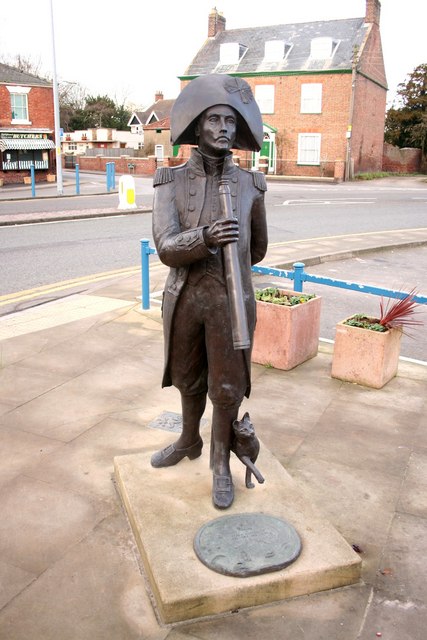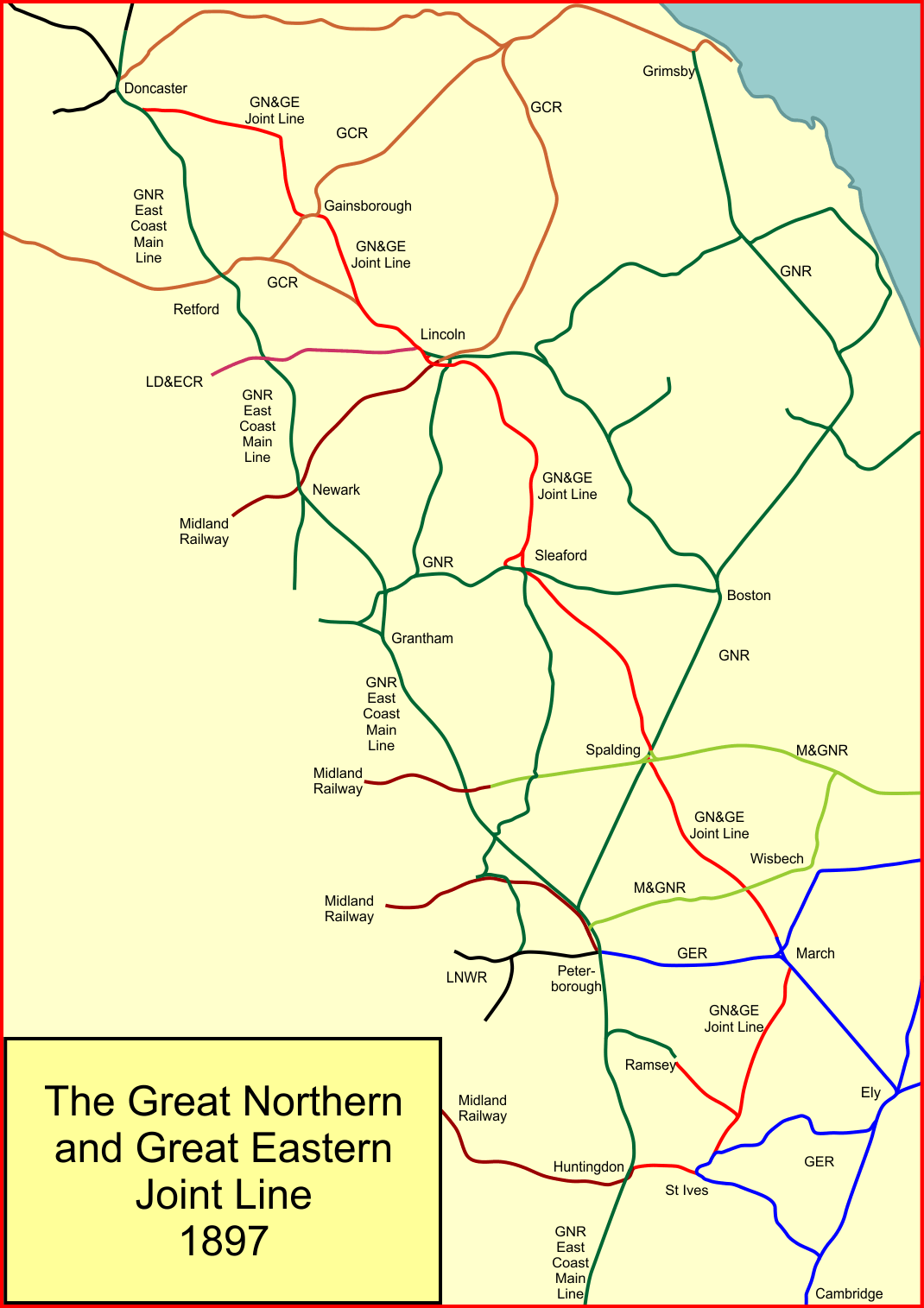|
Donington Road Railway Station
Donington Road railway station was a station in Lincolnshire on the line between Spalding and Sleaford Sleaford is a market town and Civil parishes in England, civil parish in the North Kesteven district of Lincolnshire, England. Centred on the former parish of New Sleaford, the modern boundaries and urban area include Quarrington, Lincolnshire, ....British Railways Atlas.1947. p.17 References External links Donington Road station on navigable 1947 O. S. map Disused railway stations in Lincolnshire Former Great Northern and Great Eastern Joint Railway stations Railway stations in Great Britain opened in 1882 Railway stations in Great Britain closed in 1961 {{Lincolnshire-railstation-stub ... [...More Info...] [...Related Items...] OR: [Wikipedia] [Google] [Baidu] |
Donington, Lincolnshire
__NOTOC__ Donington is a large village and civil parish in the South Holland district of Lincolnshire, England. It is north from the market town of Spalding on the A152, is bypassed by the A52, and sits between the A16 and A17. The parish includes the hamlet of Northorpe, and falls within the drainage area of the Black Sluice Internal Drainage Board. Donington is the birthplace of the explorer Matthew Flinders. History Donington was large enough in the C18th to attract the travelling theatrical companies. In 1784 Mathew Flinders, father of the famous navigator, wrote 'in the latter half of October and beginning of November we have a small Company of Comedians with us. I went 3 or 4 times and once or twice was tolerably entertained'. Governance As well as having its own parish council, Donington is part of the electoral ward of Donington, Quadring and Gosberton within the South Holland district of Lincolnshire. The total population of the ward taken at the 2011 census was 7, ... [...More Info...] [...Related Items...] OR: [Wikipedia] [Google] [Baidu] |
Lincolnshire
Lincolnshire (abbreviated Lincs.) is a county in the East Midlands of England, with a long coastline on the North Sea to the east. It borders Norfolk to the south-east, Cambridgeshire to the south, Rutland to the south-west, Leicestershire and Nottinghamshire to the west, South Yorkshire to the north-west, and the East Riding of Yorkshire to the north. It also borders Northamptonshire in the south for just , England's shortest county boundary. The county town is Lincoln, where the county council is also based. The ceremonial county of Lincolnshire consists of the non-metropolitan county of Lincolnshire and the area covered by the unitary authorities of North Lincolnshire and North East Lincolnshire. Part of the ceremonial county is in the Yorkshire and the Humber region of England, and most is in the East Midlands region. The county is the second-largest of the English ceremonial counties and one that is predominantly agricultural in land use. The county is fourth-larg ... [...More Info...] [...Related Items...] OR: [Wikipedia] [Google] [Baidu] |
Great Northern And Great Eastern Joint Railway
The Great Northern and Great Eastern Joint Railway, colloquially referred to as "the Joint Line"''Joint Line Joy'', in the Railway Magazine, June 2015 was a railway line connecting Doncaster and Lincoln with March and Huntingdon in the eastern counties of England. It was owned jointly by the Great Northern Railway (GNR) and the Great Eastern Railway (GER). It was formed by transferring certain route sections from the parent companies, and by the construction of a new route between Spalding and Lincoln, and a number of short spurs and connections. It was controlled by a Joint Committee, and the owning companies operated their own trains with their own rolling stock. The Joint Line amounted to nearly of route. The motivation for its formation was chiefly the desire of the GER to get direct access to the coalfields of South Yorkshire and elsewhere, and the wish of the GNR to discourage more ambitious incursion by the GER into its own territory, as well as the provision of relief t ... [...More Info...] [...Related Items...] OR: [Wikipedia] [Google] [Baidu] |
London And North Eastern Railway
The London and North Eastern Railway (LNER) was the second largest (after LMS) of the " Big Four" railway companies created by the Railways Act 1921 in Britain. It operated from 1 January 1923 until nationalisation on 1 January 1948. At that time, it was divided into the new British Railways' Eastern Region, North Eastern Region, and partially the Scottish Region. History The company was the second largest created by the Railways Act 1921. The principal constituents of the LNER were: * Great Eastern Railway * Great Central Railway * Great Northern Railway * Great North of Scotland Railway * Hull and Barnsley Railway * North British Railway * North Eastern Railway The total route mileage was . The North Eastern Railway had the largest route mileage of , whilst the Hull and Barnsley Railway was . It covered the area north and east of London. It included the East Coast Main Line from London to Edinburgh via York and Newcastle upon Tyne and the routes from Edinburgh to ... [...More Info...] [...Related Items...] OR: [Wikipedia] [Google] [Baidu] |
Spalding, Lincolnshire
Spalding () is a market town on the River Welland in the South Holland district of Lincolnshire, England. The town had a population of 31,588 at the 2011 census. The town is the administrative centre of the South Holland District. The town is located between the cities of Peterborough and Lincoln, as well as the towns of Bourne, March, Boston, Wisbech, Holbeach and Sleaford. The town was well known for the annual Spalding Flower Parade, held from 1959 to 2013. The parade celebrated the region's vast tulip production and the cultural links between the Fens and the landscape and people of South Holland. At one time, it attracted crowds of more than 100,000. Since 2002 the town has held an annual pumpkin festival in October. History Ancient Archaeological excavations at Wygate Park in Spalding have shown that there has been occupation in this area from at least the Roman period, when this part of Lincolnshire was used for the production of salt. It was a coastal siltland. At Wyg ... [...More Info...] [...Related Items...] OR: [Wikipedia] [Google] [Baidu] |
Sleaford
Sleaford is a market town and Civil parishes in England, civil parish in the North Kesteven district of Lincolnshire, England. Centred on the former parish of New Sleaford, the modern boundaries and urban area include Quarrington, Lincolnshire, Quarrington to the south-west, Holdingham to the north and Old Sleaford to the east. The town is on the edge of the fertile The Fens, Fenlands, north-east of Grantham, west of Boston, Lincolnshire, Boston, and south of Lincoln, England, Lincoln. Its population of 17,671 at the United Kingdom Census 2011, 2011 Census made it the largest settlement in the North Kesteven district; it is the district's administrative centre. Bypassed by the A17 road (England), A17 and the A15 road (England), A15, it is linked to Lincoln, Newark-on-Trent, Newark, Peterborough, Grantham and King's Lynn. The first settlement formed in the Iron Age where a prehistoric track crossed the River Slea. It was a tribal centre and home to a mint for the Corieltauvi i ... [...More Info...] [...Related Items...] OR: [Wikipedia] [Google] [Baidu] |
Gosberton Railway Station
Gosberton railway station was a station in Gosberton, Lincolnshire Lincolnshire (abbreviated Lincs.) is a county in the East Midlands of England, with a long coastline on the North Sea to the east. It borders Norfolk to the south-east, Cambridgeshire to the south, Rutland to the south-west, Leicestershire .... It was opened in 1882 and closed for passengers on 11 September 1961Passengers No More by G.Daniels and L.Dench and freight on 7 December 1964. References External links Gosberton station on navigable 1947 O. S. map Disused railway stations in Lincolnshire Former Great Northern and Great Eastern Joint Railway stations Railway stations in Great Britain opened in 1882 Railway stations in Great Britain closed in 1961 {{EastMidlands-railstation-stub ... [...More Info...] [...Related Items...] OR: [Wikipedia] [Google] [Baidu] |
Helpringham Railway Station
Helpringham railway station was a station in Helpringham, Lincolnshire. The station was opened by the Great Northern and Great Eastern Joint Railway The Great Northern and Great Eastern Joint Railway, colloquially referred to as "the Joint Line"''Joint Line Joy'', in the Railway Magazine, June 2015 was a railway line connecting Doncaster and Lincoln with March and Huntingdon in the eastern cou ... on 6 March 1882. The station closed for passengers on 4 July 1955. References Disused railway stations in Lincolnshire Former Great Northern and Great Eastern Joint Railway stations Railway stations in Great Britain opened in 1882 Railway stations in Great Britain closed in 1955 {{EastMidlands-railstation-stub ... [...More Info...] [...Related Items...] OR: [Wikipedia] [Google] [Baidu] |
Former Great Northern And Great Eastern Joint Railway Stations
A former is an object, such as a template, gauge or cutting die, which is used to form something such as a boat's hull. Typically, a former gives shape to a structure that may have complex curvature. A former may become an integral part of the finished structure, as in an aircraft fuselage, or it may be removable, being using in the construction process and then discarded or re-used. Aircraft formers Formers are used in the construction of aircraft fuselage, of which a typical fuselage has a series from the nose to the empennage, typically perpendicular to the longitudinal axis of the aircraft. The primary purpose of formers is to establish the shape of the fuselage and reduce the column length of stringers to prevent instability. Formers are typically attached to longerons, which support the skin of the aircraft. The "former-and-longeron" technique (also called stations and stringers) was adopted from boat construction, and was typical of light aircraft built until ... [...More Info...] [...Related Items...] OR: [Wikipedia] [Google] [Baidu] |
Railway Stations In Great Britain Opened In 1882
Rail transport (also known as train transport) is a means of transport that transfers passengers and goods on wheeled vehicles running on rails, which are incorporated in tracks. In contrast to road transport, where the vehicles run on a prepared flat surface, rail vehicles (rolling stock) are directionally guided by the tracks on which they run. Tracks usually consist of steel rails, installed on sleepers (ties) set in ballast, on which the rolling stock, usually fitted with metal wheels, moves. Other variations are also possible, such as "slab track", in which the rails are fastened to a concrete foundation resting on a prepared subsurface. Rolling stock in a rail transport system generally encounters lower frictional resistance than rubber-tyred road vehicles, so passenger and freight cars (carriages and wagons) can be coupled into longer trains. The operation is carried out by a railway company, providing transport between train stations or freight customer faciliti ... [...More Info...] [...Related Items...] OR: [Wikipedia] [Google] [Baidu] |






